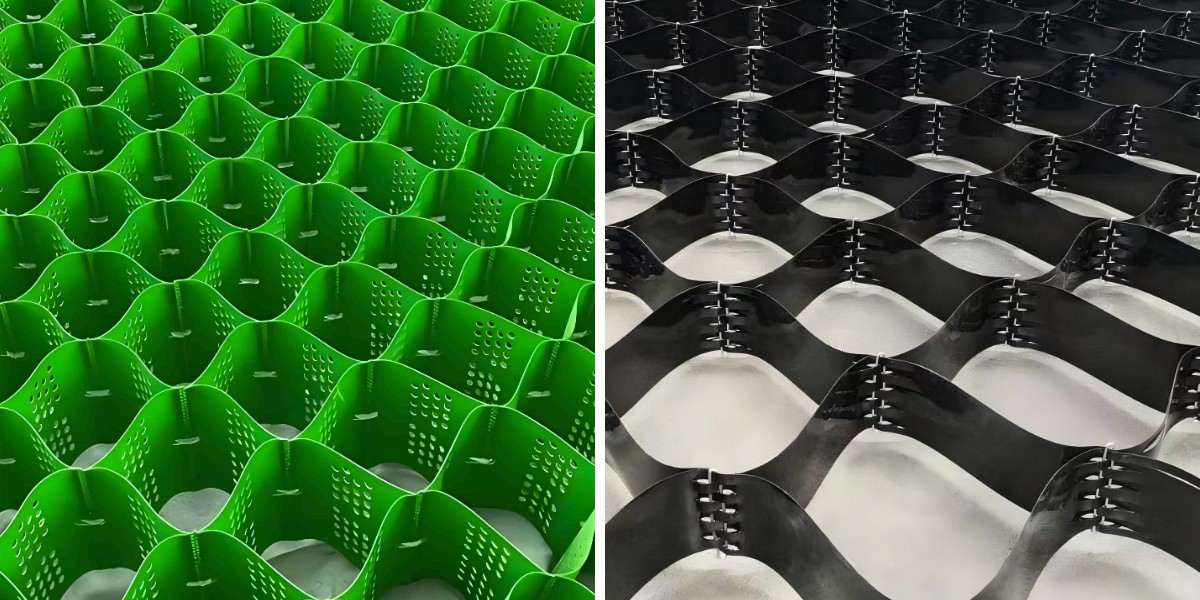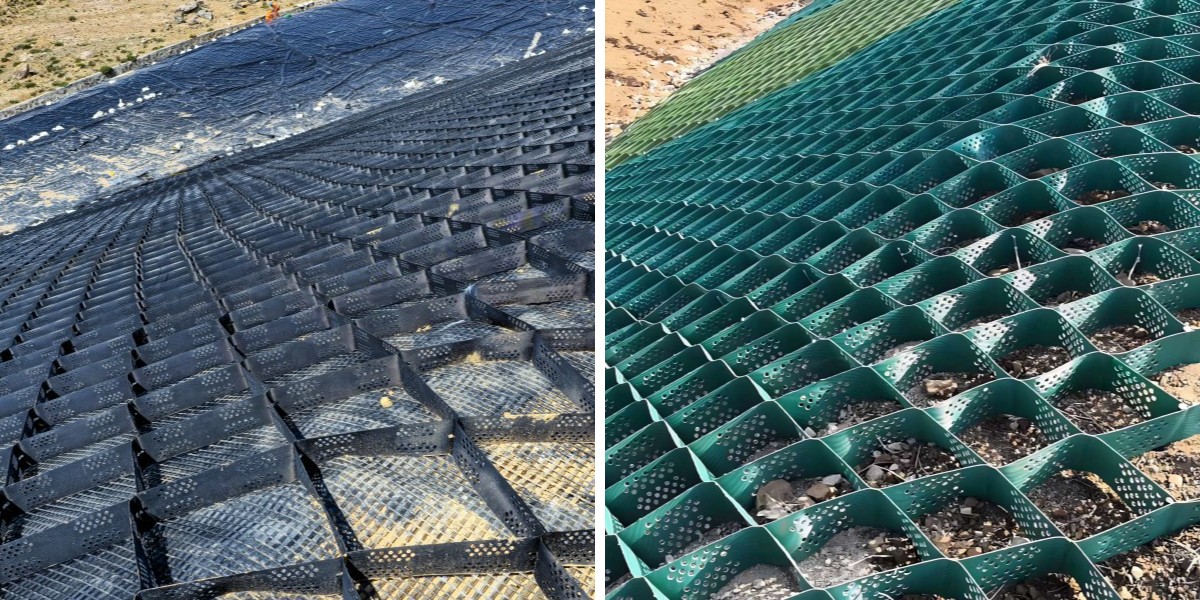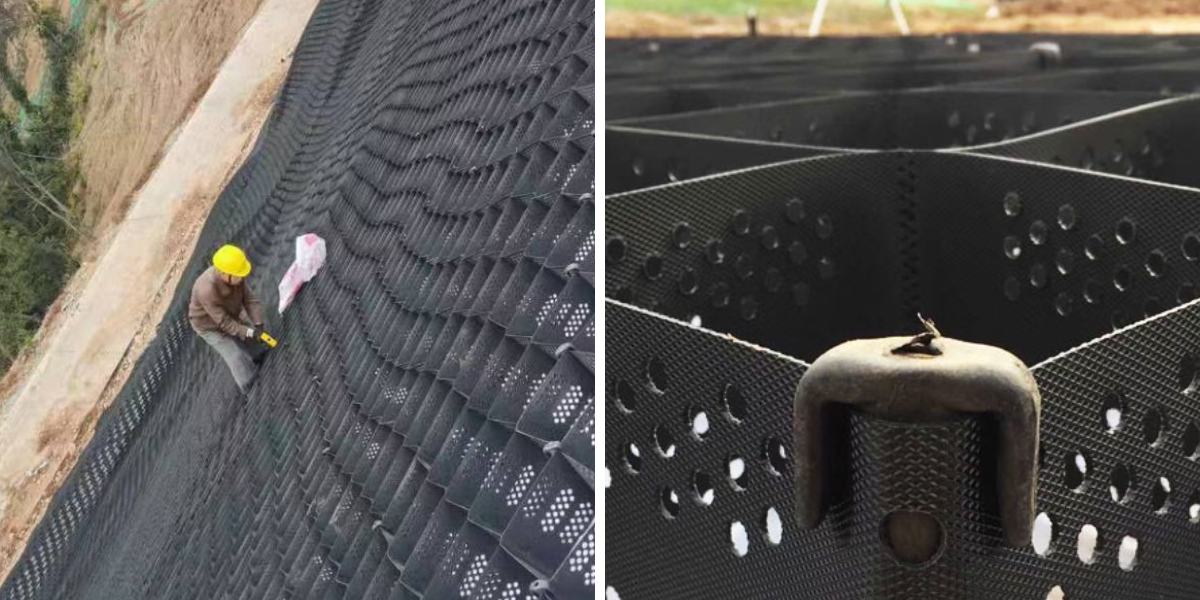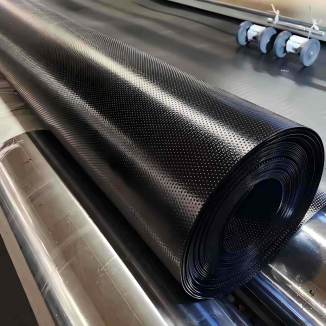How Geocell Grids Improve Slope Stability in High-Rainfall Regions
High-rainfall areas face special challenges in slope management, as immoderate water infiltration weakens soil structure, will increase erosion risk, and threatens infrastructure safety. Traditional slope stabilization strategies like concrete keeping partitions or rock riprap regularly combat to face up to extended moisture and heavy runoff, main to common repairs and excessive renovation costs. However, geocell slope safety systems, especially HDPE geocell grids, have emerged as a strong solution. These three-d cell structures—made from durable, bendy polymers—reinforce soil, manipulate water flow, and beautify vegetation growth—critical for retaining slope integrity in moist climates. Let’s discover 5 key methods geocell grids enhance slope balance in high-rainfall areas, with sensible insights into their overall performance in real-world conditions.
1. Enhanced Soil Cohesion to Resist Saturation
In high-rainfall regions, soil saturation is a main motive of slope failure. When water fills soil pores, it reduces friction between particles by using up to 40%, making the slope inclined to landslides or mudflows—especially in clay-rich soils that swell when wet. Geocell slope grids tackle this through growing a bolstered matrix that binds soil particles together, even beneath excessive moisture conditions.
HDPE geocell grids, crafted from high-density polyethylene with UV inhibitors, are improved on-site to structure a honeycomb-like shape with telephone heights ranging from two to 12 inches. When crammed with nearby soil, gravel, or recycled aggregate, the cells confine the cloth in a inflexible framework, stopping lateral particle displacement even when saturated. For example, in a toll road slope undertaking in a monsoon region, geocell-reinforced soil retained 30% greater brotherly love than unreinforced soil after 12 hours of non-stop rainfall. This confinement impact permits the slope to preserve its attitude and load-bearing capability notwithstanding extended downpours, decreasing the chance of surprising collapses that endanger roads, railways, and close by structures.
2. Improved Drainage to Reduce Hydrostatic Pressure
Trapped water inside slopes creates hydrostatic pressure—a hidden pressure that pushes in opposition to soil particles, weakening their interlock and growing the chance of slope failure. In high-rainfall areas, this strain can construct up rapidly, mainly in compacted or clayey soils with terrible permeability. Slope Protection structures the use of geocell grids combine built-in drainage mechanisms that alleviate this strain via directing water away from fundamental zones.
The porous sketch of geocell slope grids, mixed with their open-cell structure, permits water to glide laterally thru the mobile framework whilst preserving soil particles. This managed drainage prevents water from pooling inside the slope’s core, the place it would in any other case saturate the soil and limit shear strength. Engineers frequently optimize this impact by way of filling geocell cells with permeable combination like beaten stone, developing a community of micro-drainage channels. In a coastal slope mission in a tropical region, this setup reduced hydrostatic stress by way of 50% in contrast to usual methods, preserving the soil association and steady even all through every day heavy rains. When paired with perforated drainage pipes alongside the slope base, HDPE geocell grids make certain environment friendly water evacuation, defending the slope from inner erosion.
3. Erosion Control Against Intense Runoff
Heavy rainfall generates effective floor runoff that can attain speeds of 5+ ft per second, eroding slope surfaces, carving gullies, and exposing underlying soil layers. This erosion no longer solely weakens the slope’s structural integrity however additionally contains sediment into waterways, harming aquatic ecosystems. Geocell slope safety acts as a bodily barrier to sluggish runoff and reduce erosion, outperforming grass seeding or mulching in high-rainfall conditions.
When mounted on slope faces, HDPE geocell grids disrupt the float of water, decreasing its pace with the aid of up to 70% via friction and redirection. The cells lure sediment particles, permitting them to settle and rebuild the topsoil layer. In a mountain street challenge in a rainforest region, geocell-protected slopes misplaced simply 0.2 inches of soil annually, in contrast to 2+ inches on unprotected slopes. The grids additionally guard the soil from the affect of raindrops, which can dislodge particles as small as 0.1mm and provoke erosion. For steep slopes (25° or greater), overlapping geocell panels create a non-stop barrier that prevents rill formation, making sure runoff is dispersed evenly throughout the floor as an alternative than concentrating into adverse streams.
4. Vegetation Support for Natural Stabilization
Vegetation performs a indispensable position in long-term slope steadiness by way of binding soil with roots (which can expand shear electricity by way of 2–3 times) and absorbing extra water thru transpiration. However, setting up plant life in high-rainfall areas is challenging—heavy rains wash away seeds, erode topsoil, and drown younger seedlings. Slope Protection with geocell grids creates an best microenvironment for vegetation growth, addressing these challenges effectively.
HDPE geocell grids preserve moisture in the root region by means of decreasing water runoff, whilst their mobile shape bodily protects seeds and seedlings from rain impact. When crammed with a soil-compost mixture, the cells furnish a nutrient-rich developing medium that helps grasses, legumes, and even woody shrubs. In a residential improvement slope challenge in a humid subtropical area, geocell-installed slopes done 90% vegetation insurance inside three months, in contrast to 30% on slopes the use of ordinary hydroseeding. As vegetation matures, its root machine intertwines with the geocell grid, developing a composite shape that combines mechanical reinforcement with herbal stability. This partnership reduces long-term upkeep needs, as flora always toughen the slope and adapt to altering conditions.
5. Adaptability to Slope Variability and Climate Changes
High-rainfall areas frequently characteristic numerous slope angles (from 15° to 60°), soil kinds (sandy, loamy, or clayey), and climate patterns (including typhoons, monsoons, and flash floods), requiring bendy stabilization solutions. Geocell slope grids provide unmatched adaptability to these variables, making them suitable for a broad vary of initiatives from motorway embankments to landfill slopes.
HDPE geocell grids can be custom-made to healthy slopes of various steepness—for mild inclines (15–25°), smaller cells (6x6 inches) with soil infill work best, whilst steeper slopes (30–60°) advantage from large cells (12x12 inches) stuffed with combination for introduced weight. They accommodate one of a kind soil kinds with the aid of adjusting cellphone top and infill material: sandy soils, which drain shortly however erode easily, pair properly with geocells to lure particles, whilst clayey soils achieve expanded drainage via the grid’s porous structure. Additionally, HDPE’s resistance to UV degradation and chemical corrosion ensures sturdiness in excessive weather, which include temperatures ranging from -40°F to 176°F. In areas experiencing climate-induced rainfall will increase (e.g., components of Southeast Asia and Central America), geocells supply a future-proof solution, adapting to heavier downpours besides compromising stability. This versatility makes them a low-priced choice, with lifecycle prices up to 40% decrease than normal methods.
Conclusion
In high-rainfall regions, slope balance relies upon on high-quality water management, soil reinforcement, and erosion control—all areas the place geocell slope grids excel. By bettering soil concord thru confinement, enhancing drainage to decrease hydrostatic pressure, slowing runoff to stop erosion, aiding vegetation for herbal reinforcement, and adapting to various conditions, HDPE geocell structures grant a complete answer for Slope Protection. Unlike inflexible usual strategies that crack underneath moisture stress, geocell grids mix flexibility with strength, developing resilient slopes that face up to the challenges of heavy rainfall. For engineers, contractors, and land managers in moist climates, geocell science provides a sustainable, long-lasting way to shield infrastructure, landscapes, and communities from slope failure—proven in real-world initiatives to decrease protection prices and decorate security for decades.
Contact Us
Company Name: Shandong Chuangwei New Materials Co., LTD
Contact Person :Jaden Sylvan
Contact Number :+86 19305485668
WhatsApp:+86 19305485668
Enterprise Email: cggeosynthetics@gmail.com
Enterprise Address: Entrepreneurship Park, Dayue District, Tai 'an City,
Shandong Province










